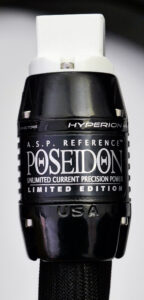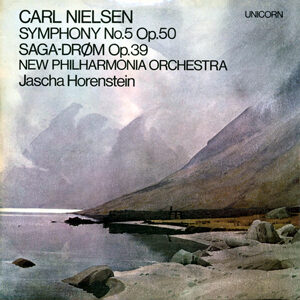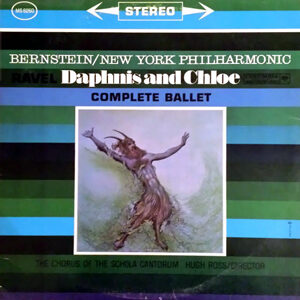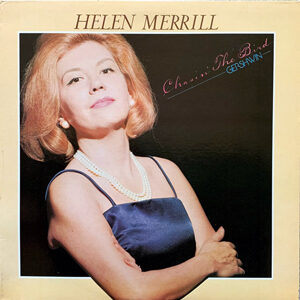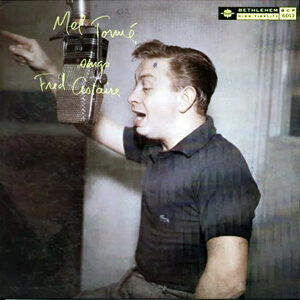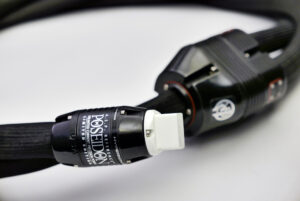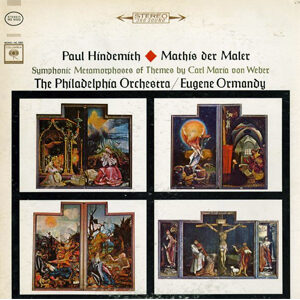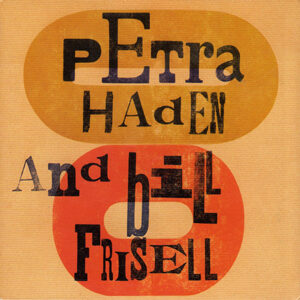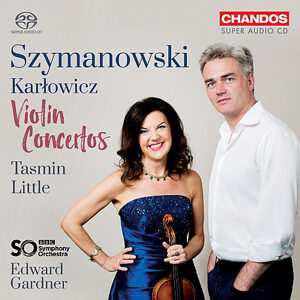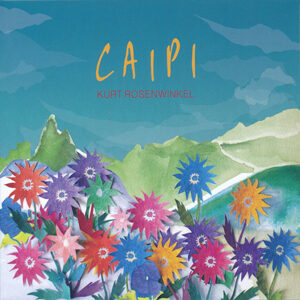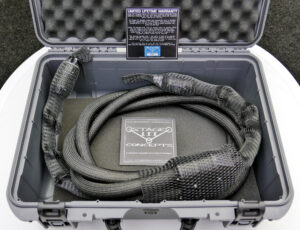Nielsen, Symphony No. 5, New Philharmonia Orchestra, Unicorn RHS 300.
Last time I heard this record was at a friend’s house, a guy with a good system, Avalons, Linn, Koetsu, etc. That was a couple of weeks ago. This evening with the Poseidon in place, it really seemed like a different recording. I got to know it through the Nonesuch pressing back in the 70s. The 1969 recording holds up perfectly well. Soundstage is excellent. Strings are generally well-placed, and sound alive, with a little bit of silk.
There were many solo or duo wind parts. The placement across the stage was reasonably precise, and the timbre was sufficiently full-bodied to be aurally exciting. The same for the glockenspiel, or whatever it is, that plays a repeated note pattern that sounds exactly like the bell system at the old department stores that told you it was the end of the day, closing time, and you’d better get moving. Made me sweat with a claustrophobic anxiety when I was 6 years old, and still does.
When the mood shifted and the strings did the big chorale, we began to hear just a slight congestion, but everything still worked. Then we came to the best aspect of this particular recording, the ad lib snare drum, whose instructions, from Nielsen, are to, in effect, try to stop the forward motion of the music. This snare sounded like he listened to a lot of Gene Krupa, and he lets loose like it’s midnight at the Oasis and everybody is yelling “let go!” It’s the only version I recollect that’s complete with stuttering, unrestrained rimshots. Yet he was ultimately overwhelmed, and gave in with a beautifully controlled roll that comes and goes. Great stuff.
Ravel, Daphnis and Chloe, Bernstein, New York Philharmonic, Columbia MS 6260.
I can’t recall where I stumbled upon this mint 6-eye. It was certainly a terrific find, although it’s still a Columbia. Stereo is somewhat ping-pong as far as the strings go, but the chorus is spread across the soundstage as it should be. While the strings still have some of the early Columbia brightness — though not as much as I recall — the left-right pizzicato effect is luscious. And the word “luscious” makes me think of how to describe Bernstein’s approach to Ravel’s magnificent creation, but the more accurate word would be “lascivious.” I’d hate to accuse my hi-fi of anything untoward, but in this instance, it is clearly guilty of aiding and abetting.
I heard this record on this same system maybe 4-6 weeks ago, and I can tell you it did not sound like this. This is an imperfect record in various ways. That was more apparent before. Now, there is more of the small and intimate detail that tells you that a real musical event is happening — or at least was happening, and was captured to very good effect: micro-dynamics, the slight, velvety edge of the bows, the feel of the skin of the timpani, and, perhaps most importantly, the space, the air in the room, the breath that surrounds the strings of the harp, the clarinet duo, the solo cello.
Helen Merrill, Chasin’ The Bird— Gershwin, Inner City IC 1080.
This 70s release by Helen Merrill, who made her name with a series of Emarcy issues from the mid-50s, was from a series of releases directed by the pianist Dick Katz. Merrill maintained popularity via a long residence in Japan, where she also made records. The sound on this release is pretty good, though I am tempted to try to track down a Japanese issue. Merrill’s voice is in good form, and she handles herself with somewhat greater subtlety.
Like most 70s recordings, the end result in this case as accorded by the Poseidon seems to be assembled from considerable multi-micing, sometimes in different acoustics. The system leaves no doubt about that, in its revealing way. However, the transparency was not a deficit. Merrill’s voice benefits from an up-close perspective.
Mel Torme Sings Fred Astaire, Bethlehem BCP 6013 (mono).
This was my fifth copy of this Torme release from the mid-50s in superb mono. The problem is, the former owners tended to like the record and played their copies, which makes things difficult for us collectors a half century later. But what a pleasure it is hearing a good, clean copy. And this copy was cleaned in nearly every method known to man, although I no longer have any of the Freon that used to do such a great job, decades ago.
Sometimes it is simply hard to figure out what to say about listening to a particular record. I’ve heard this LP on various incarnations of my own system and several others. Via the Poseidon, this is the best I’ve heard it. It’s mono, but there is some degree of soundstage, both forward, backward, and side to side. Tonal balance is as good as mono gets; the highs are fully there, and so are the lows. The timbre of the instruments in Marty Paich’s arrangements is full-bodied to such an extent that you can hear pretty darn clearly who is playing what note in what chord in the instrumental breaks. The occasional inclusion of “color” percussion like bells and chimes helps us know that the upper frequencies are fully there, though without a hint of brightness. Indeed, the overall tonal balance is everything that it should be.
And I think the Poseidon is an important piece of the equation, due to the richness of its lower mid-range and bass. Some would say it’s “fat,” but it’s just not. It’s just fully there. There is some mild compression in the sound. I’ve heard it in some mono recordings. It could be an artifact of mono played with a stereo cartridge, I don’t know. I don’t notice it as much this evening. I don’t know to what to attribute that effect. The system, with the Poseidon, is honest and transparent enough that I know it is there. But it is easy to overlook in favor of everything else that sounds so terrific. Same with the slight surface noises that one cannot avoid in a record of this age.
Hindemith, Mathis see Maler, Columbia MS 6562 (2-eye).
I was somewhat fearful of listening to this Columbia 2-eye. I’ve loved this performance of what I think is a near masterpiece. However, as my ears and equipment have matured, I’ve been increasingly disappointed with many Columbia classical recordings that I used to love. This is one of those. The strings are thin and shrill, the soundstage generally flat, the detail and ambience vague or lacking. And the vinyl quality is too often poor. But this looked like a good copy, which responded to an ultrasonic cleaning. And as 60s Columbias go, it was pretty quiet. The strings were still thinner than Philadelphia’s reputation warranted and with a slight bit of edge; but the soundstage was nice: wide, with some depth,the winds were well-delineated, the brass not too bratty. Indeed, the tonal balance from top to bottom was quite good, with perhaps just a bit of upper treble emphasis, though not particularly annoying. And there was air, with some hall ambience. Really, there were some nice moments of richness, as you would expect from Philadelphia. The system with the Poseidon in place allowed me to hear just about all that was good about this recording without being distracted by the few negatives mentioned. Occasional surface blemishes slipped by largely unnoticed. I was pleasantly surprised by moments of tonal richness that I did not recall.
Listening to Digital
Petra Hayden and Bill Frisell, Sovereign Artists 1956-2.
I’d missed this 2005 collaboration between Petra Haden, the daughter of the great bassist Charlie Haden, and one of my favorite guitarists, Bill Frisell. I’m so glad I discovered it, thank goodness for eBay. Haden and Frisell eschewed the obvious strumming-with-singer concept in favor of a much more ambitious approach, making full use of the studio. Haden, a capable violinist as well as vocalist, adding multiple violin parts to Frisell’s many guitars, and her own sometimes dense and gorgeous multi tracked harmonies, to produce a wonderful journey in sound. How well the journey works is not entirely dependent upon the method of reproduction, but listening on a well-tuned system certainly intensely enhances the experience.
Other than reverb, I experienced on multiple occasions the “musicians in the same room” effect. The detail was extraordinary, but never at the expense of the music. What I heard were full-bodied voices and richly toned guitars. This was some of the best digital I’ve experienced. I know that the Poseidon was part of the experience because of its ability to produce the full range of an instrument’s sound, with incredible detail, yet without being overbearing. I had a feeling many times while listening that, whatever I do, I’d better not change a thing. I want this listening experience to be able to be repeated.
Szymanowski, Violin Concertos, Chandos CHSA 5185.
As noted above, I like the violin concerto quite a bit, but it was not recorded in what I would consider great analog, so it has been an ongoing project to find a great digital version. I don’t know that this Chandos release is necessarily “it,” but the sound is super, at least on the current system. SACD can do such a great job with ambience and atmosphere. Chandos, in recent years, has refined their techniques in such a way that their recordings can be quite satisfying — indeed, extremely so, as this one was. The soundstage was very wide, extended well back, and with wonderfully transparent air in the top. Due credit must be given to the EMM digital front end, and to the Poseidon, which fed it. Another thing that I really enjoy about good SACD is that it can be very difficult to overload and there was nothing like overloading here. Crescendos never broke up at the edges. Finally, and one of the main reasons I wanted to try out this recording with the Poseidon, is that the music and the recording both stress the exoticism similar to what one would find in Scriabin or Rimsky Korsakov. I thought that the Poseidon might let me hear that to fullest advantage, and I was not mistaken.
Szymanowski’s orchestration is colorful and exotic, similar to what we find in some of the Russian composers of the day, such as Rimsky-Korsakov and particularly in Ravel’s orchestration of Mussorgsky’s Pictures at an Exhibition. However, the harmonies are at times more advanced than either – not quite as aggressive as Bartok in a work such as The Miraculous Mandarin – but Szymanowski was clearly unafraid to take risks in his effort to intoxicate the listener. An accurate presentation as enabled by the Poseidon is of immense benefit in clarifying these orchestral and harmonic textures. Any kind of muddiness or edginess on the part of the system would be revealed.
There was none. As with the remainder of my digital listening for this review, the result was literally as good as I’ve heard digital. Big, full-boned, clean, harmonically fully fleshed out — a terrific way to listen deep into the music, to float with it, and to forget about the source.
Kurt Rosenwinkel, Caipirinha, RAZDAZ SSC4618.
The first three or four tunes on this 2017 issue by Kurt Rosenwinkel could almost be considered a tribute to the Brazilian-influenced Pat Metheny Group records from the 80s except that it is less of a group effort with Rosenwinkel playing many of the instruments and singing, along with the Brazilian singer/guitarist.
Most of the record was recorded in Germany. They did a great job. Rosenwinkel also did a great job as an arranger; in terms of sensuous sounds, these tunes are about as good as it gets, with a complexity of texture handled brilliantly by the EMM DA2 with the help of the Poseidon power cable. In terms of complexity, I would be hard-pressed to count the number of tracks on these tunes: a phalanx of voices, keyboards of various kinds, guitars, percussion and drums across a huge soundstage all give the system a very serious workout. This is the widest soundstage I have heard out of the digital side of the system.
Yes, I recognize that, having been constructed of substantial quantities of overdubs, it is artificial, but it is a lovely illusion. I’m not missing analog so much. That is rare. And I like it.
Final Thoughts
In an effort to bring some closure to this review and as a check against my memory, I substituted the Stage III Kraken for the Poseidon and listened to some of the same cuts that had formed the basis for the Poseidon review. The following comments discuss the results of that listening session.
On the Colin Valin Le Vent (ECM 2347) also discussed in the EMM Review, the top end of the Kraken is fine, but not nearly as rich as the Poseidon. In other words, the cymbals are fully there at the top of their range, but are missing some of the “golden” richness and harmonic complexity further down. The bass on the Kraken is very good, but that of the Poseidon is bigger and more effortless.
On the Kurt Rosenwinkel, with the Kraken instruments are more compressed, less separated on the soundstage. It is also somewhat harder to differentiate some of the parts in more supportive roles. For some reason, with the Kraken you become more aware of imperfections in the recording. Soundstage is not as wide and is flatter as you might expect with a recording that consists largely of overdubs. Some of the magic is gone. I’m still being transported into a new and different sound world, but just not the way I was with the Poseidon. I was simply stunned with some of what I heard with the Poseidon. My jaw dropped. What I am trying to say is that with the Poseidon, it is almost impossible to do anything but focus solely on the music. It literally draws you into the world of the recording.
The Petra Haden/Bill Frisell, which is a relatively uncomplicated recording, is still pretty thrilling with the Kraken, though without quite as much definition. Haden’s voice remains very present and gorgeous, but loses some definition and ease when music becomes thicker with added parts and is somewhat cluttered by comparison.
The Szymanowski V Con is still really good and airy at the start, glistening with delicacy. As the orchestra fills out, it loses some sense of ease and definition. While the soundstage was gigantic and fully defined with the Poseidon, here, it is merely really good, and I don’t have the sense that it extends entirely seamlessly between the speakers that I had with the Poseidon. It’s an issue of illusion. With the Kraken, the soundstage is pretty much there all the way across, but the Poseidon gave a better sense of it really being there, all the way up to the ceiling.
Differences between the Kraken and Poseidon are in some ways less obvious on the EMI Shostakovich Symphony No. 7 conducted by Paavo Berglund on vinyl. Tonality of the LP is quite good; strings are particularly easy to listen to, almost sweet. Could this have something to do with the fact that vinyl tends to give an impression of greater ease than digital much of the time? The soundstage remains not quite as big, wide, and far back as with the Poseidon, and does not extend as convincingly to the ceiling all the way across. Nevertheless, the Kraken provided a good deal of enjoyment. At the loudest part of the “bolero” portion of the first movement, things got muddy, congested, and not entirely pleasant. The Poseidon handled this with greater ease although it taxed the cartridge as well. It’s just mighty loud, no two ways about it.
Overall, at least based upon this experience, I could live happily with the Kraken; indeed, being able to listen to it regularly has been my great fortune over the last year.However, after being exposed to the effects of the Poseidon, it will be difficult to go back to the Kraken. In fact, after agonizing about spending the money, I decided to purchase the review sample and will leave it on the HB Marble Power Slave powering the front-end of my system.
Copy editor: Dan Rubin
- ← Previous page
- (Page 3 of 3)

